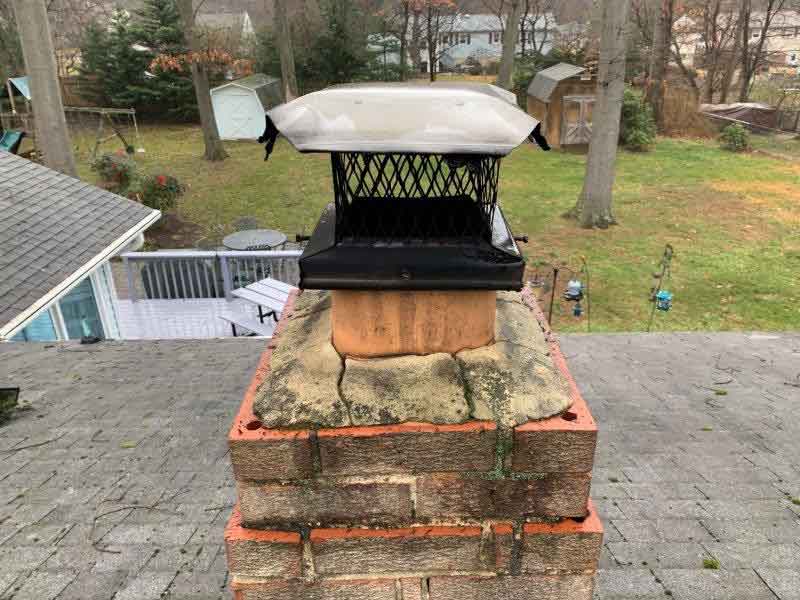Chimney deterioration, creosote or soot buildup, clogs in the flue, gas pilot light won’t light and similar struggles are unfortunately something every chimney owner will face from time to time. Even the most well cared for chimney faces wear and tear now and then and will need professional assistance, and sweepings are inevitable, too.

The good news is that there are steps you can take to minimize the rate at which these things occur. Things like maintaining good airflow, burning hotter fires, and using seasoned wood, for instance, ensure creosote doesn’t form as fast. It’s also good to do things like close the damper after use, clear out ash regularly, and keep an eye on the state of your brickwork, chimney cap, and the like.
But the best thing you can do? Whether your chimney vents a furnace, boiler, gas fireplace, wood stove or wood burning fireplace there is one important thing you can do, invest in annual inspections.
Why Annual Chimney Inspections Are Essential
The Chimney Safety Institute of America (CSIA) along with countless reputable organizations and chimney companies all recommend the same things in terms of chimney inspections – schedule them annually!
Now, we get that scheduling inspections before every heating season can feel like a lot… and many wonder why it’s necessary if their system looks and functions fine every year.
The facts are that there are lots of changes that can occur over a year and hidden dangers that could be potentially lurking in your flue (even it was fine the year before), and we’ll definitely want to check your creosote/soot levels to ensure you’re not at risk for clogs or experiencing a chimney fire.
Annual inspections also allow us the opportunity to check if any type of traumatic event has occurred, such as a lightning strike or damage from the freeze/thaw cycle. We’ll look for things like rust, signs of a collision, any missing parts, and interior damage, water entry points all of which could indicate bigger problems are amiss.
In the end, it will be a lot better on your budget, schedule, and stress levels if you invest in care annually, rather than wait for some big damaging event to occur. Affordable maintenance earlier on is always better than time-consuming expensive repairs, renovations, or rebuilds down the line!
Keep in mind that regular inspections also ensure you save on energy costs while protecting your investment and keeping your home value high. And we’ll be able to note and monitor any changes that occur over time.
Basically… If it’s been over a year since your last one (or if any concerns have recently come up) get your inspection on the books now.
The Minimal Three Levels of Inspections
Here’s a bit more information on each of these levels as per National Fire Protection Association.
A level one inspection covers the basics. Any parts that are easily accessible and that don’t require the use of tools to gain access to will be looked over to ensure your system is structurally sound. We’ll also make sure your chimney is free of clogs or creosote/soot buildup.
If you’ve always invested in annual inspections, haven’t had any major changes completed recently, and aren’t worried about big damages caused by a natural disaster or harmful event (think chimney fires, lightning strikes, floods, tornadoes, etc.), a level one inspection should be sufficient for you.
A level two inspection involves everything in a level one inspection, then takes it a bit further. If areas can be easily accessed with basic tools, we’ll utilize those to ensure we’re not missing any potential hidden damages. We’ll also get out our camera equipment, which is snaked up the chimney and gives us that up-close look we need to make an accurate analysis.
Level two inspections are required during the sale or purchase of property, after a natural disaster, after a change in fuel type or renovation, or after a chimney fire.
A level three inspection is far less common than a level one or two, but it’s still sometimes needed. If a level two inspection is completed and the cause of chimney problems is still unknown, parts of the chimney may need to be removed or torn down to check the condition of concealed areas. This could mean doing things like taking off the chimney cap or removing an interior wall.
That said, these are done only when totally necessary. It’s likely you won’t need one, but we want to be certain we’re equipped to perform them in those more extreme cases.
At Clean Sweep of Anne Arundel County, we’re certified with the CSIA and NFI and offer three levels of chimney inspections. No matter where your system currently stands, we’ll be able to help you out
Give Us a Call Before Fall
Fall is just around the corner, and it won’t be long until our schedule books really start to fill up. Book your inspection with the qualified, experienced crew here at Clean Sweep of Anne Arundel County now, so you’re all set when temperatures drop in a few months.
We look forward to working with you!
